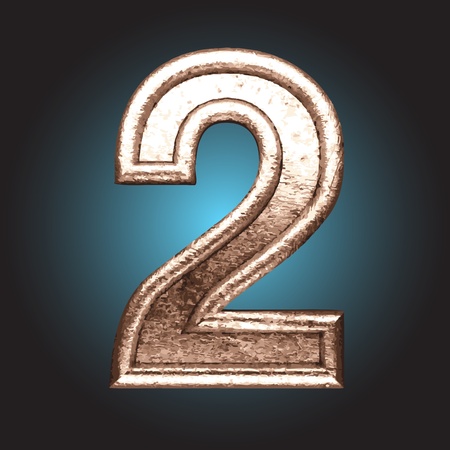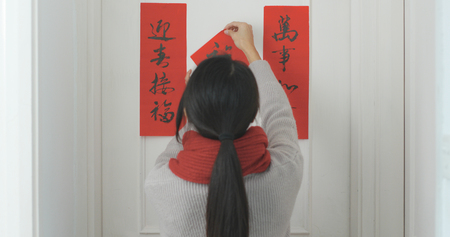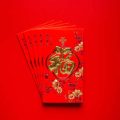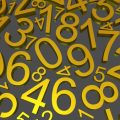Introduction to the Chinese Zodiac
The Chinese Zodiac, or “Shengxiao” (生肖), is an ancient system that assigns an animal and its traits to each year in a repeating 12-year cycle. This tradition, deeply rooted in Chinese culture, has fascinated people around the world—including many in the United States. Each animal not only represents a year but also carries symbolic meanings and personality traits that are believed to influence people born under its sign.
How the 12-Year Animal Cycle Works
The Chinese Zodiac is based on the lunar calendar, with each year linked to one of twelve animals. The cycle starts over every twelve years. The order of the animals is said to have been determined by a legendary race organized by the Jade Emperor. The animals completed this race in a specific order, which now forms the sequence used today.
The Twelve Animals and Their Order
| Order | Animal | Chinese Name | Recent Years |
|---|---|---|---|
| 1 | Rat | 鼠 (Shǔ) | 2008, 2020 |
| 2 | Ox | 牛 (Niú) | 2009, 2021 |
| 3 | Tiger | 虎 (Hǔ) | 2010, 2022 |
| 4 | Rabbit | 兔 (Tù) | 2011, 2023 |
| 5 | Dragon | 龙 (Lóng) | 2012, 2024 |
| 6 | Snake | 蛇 (Shé) | 2013, 2025 |
| 7 | Horse | 马 (Mǎ) | 2014, 2026 |
| 8 | Goat/Sheep | 羊 (Yáng) | 2015, 2027 |
| 9 | Monkey | 猴 (Hóu) | 2016, 2028 |
| 10 | Rooster/Chicken | 鸡 (Jī) | 2017, 2029 |
| 11 | Dog | 狗 (Gǒu) | 2018, 2030 |
| 12 | Pig/Boar | 猪 (Zhū) | 2019, 2031 |
A Brief History of the Chinese Zodiac in America
The Chinese Zodiac was introduced to the United States through waves of immigration from China in the 19th and early 20th centuries. Over time, it has become a familiar part of American pop culture—especially during Lunar New Year celebrations. Today, you might see zodiac signs featured at festivals, restaurants, and even in horoscopes found in American newspapers and online platforms.
Cultural Relevance in Modern U.S. Society
The zodiac’s influence goes beyond just fun personality quizzes; it’s also a way for many Asian Americans to connect with their heritage and for others to appreciate cultural diversity. The symbolism behind each animal can be seen at events like parades and community gatherings across major U.S. cities.
2. Legends and Meaning Behind the 12 Animals
The Chinese zodiac, or Shengxiao, is a fascinating tradition that assigns an animal to each year in a repeating 12-year cycle. Each animal has its own story, traits, and symbolism. Here in the U.S., these legends are often shared at cultural festivals, in classrooms, and even in family gatherings, helping people connect with Chinese heritage in a fun and meaningful way.
The Great Race: The Origin Story
According to legend, the Jade Emperor invited all animals to a race across a river to determine their order in the zodiac. The first twelve to cross would earn a spot. This story explains not only the sequence of the animals but also many of their personality traits as understood in Chinese culture.
Zodiac Animals and Their Symbolic Meanings
| Animal | Chinese Name | Symbolic Traits | Legend Highlights |
|---|---|---|---|
| Rat | 鼠 (Shǔ) | Clever, resourceful | Won the race by riding on Ox’s back and jumping ahead at the finish line. |
| Ox | 牛 (Niú) | Diligent, dependable | Helped Rat across the river but was outsmarted at the end. |
| Tiger | 虎 (Hǔ) | Courageous, confident | Swam strongly and finished third despite the current. |
| Rabbit | 兔 (Tù) | Gentle, alert | Bounced across stones and logs to cross the river. |
| Dragon | 龙 (Lóng) | Noble, kind-hearted | Could have finished first but stopped to help others along the way. |
| Snake | 蛇 (Shé) | Wise, mysterious | Sneaked onto Horse’s hoof and surprised everyone at the finish line. |
| Horse | 马 (Mǎ) | Lively, energetic | Diligently raced but was startled by Snake near the end. |
| Goat (Sheep) | 羊 (Yáng) | Mild, sympathetic | Worked with Monkey and Rooster to build a raft and cross together. |
| Monkey | 猴 (Hóu) | Clever, curious | Collaborated with Goat and Rooster for success. |
| Rooster | 鸡 (Jī) | Observant, hardworking | Took initiative to find a raft for himself and friends. |
| Dog | 狗 (Gǒu) | Loyal, honest | Loved playing in water so much that it finished second-to-last. |
| Pig (Boar) | 猪 (Zhū) | Sincere, generous | Ate and napped during the race but made it just in time for twelfth place. |
The Deeper Meanings for Americans Today
The stories behind each animal are more than just fun tales—they carry lessons about teamwork, cleverness, kindness, perseverance, and more. In American communities with Chinese roots or those who simply enjoy multicultural experiences, sharing these myths helps teach kids about values while celebrating diversity. Whether you’re reading your fortune cookie or attending Lunar New Year parades from San Francisco to New York City’s Chinatown, these animals’ legends continue to bring people together across cultures.

3. Comparing Eastern and Western Zodiac Traditions
Understanding the Basics: Chinese vs. Western Zodiac
The zodiac is a popular way for people to explore their personalities, relationships, and even future possibilities. In the United States, both the Chinese and Western zodiacs are widely recognized, but they come from very different traditions. The Chinese zodiac is based on a 12-year cycle, each year represented by an animal, while the Western zodiac follows a 12-month cycle with signs based on constellations.
Main Differences at a Glance
| Zodiac System | Origin | Cycle | Symbols | Main Focus |
|---|---|---|---|---|
| Chinese Zodiac | China (Ancient Asia) | 12 years | Animals (Rat, Ox, Tiger, etc.) | Year of birth |
| Western Zodiac | Babylonian/Greek (Ancient Europe) | 12 months | Constellations (Aries, Taurus, etc.) | Date of birth (month & day) |
Similarities Between the Two Systems
- Personality Insights: Both systems try to explain personality traits based on your birth time.
- Cultural Influence: Each plays a big role in its own culture and has been adapted in American pop culture—think horoscopes in magazines or fun quizzes online.
- Compatibility: People use both systems to see who they might get along with or what kind of career suits them best.
Differences in Symbolism and Interpretation in the U.S.
The Chinese zodiac uses animals like the Dragon and Rabbit, each with unique stories and meanings. In contrast, the Western zodiac uses mythological symbols tied to stars. In American culture, people often enjoy learning about both systems for entertainment and personal insight. For example, someone might know they are a Leo in the Western system and a Monkey in the Chinese system—and share both at social gatherings or on social media profiles.
How Americans Mix Both Traditions
In the U.S., its common to see references to both zodiacs during New Year celebrations or in lifestyle publications. Restaurants may hand out placemats with the Chinese zodiac chart, while daily horoscopes are a staple in newspapers and apps. Some Americans even look up both signs for extra fun when planning events or choosing gifts. This blend reflects Americas love for diverse cultural traditions.
4. The Chinese Zodiac in American Life
Bringing Ancient Traditions to Modern America
The Chinese zodiac, with its 12 unique animal symbols, has found a special place in American society. While it originated thousands of years ago in China, today the zodiac is celebrated and recognized across the United States by people of many backgrounds. Lets explore how these ancient symbols have become part of everyday life and culture in America.
Festivals and Public Celebrations
One of the most visible ways the Chinese zodiac appears in the U.S. is through festivals, especially during Lunar New Year (often called Chinese New Year). Cities like San Francisco, New York, and Los Angeles host large parades and street fairs where zodiac animals are featured on floats, costumes, and decorations. These celebrations attract both Asian-American communities and people from all walks of life who come together to enjoy dragon dances, lantern displays, and traditional foods.
Common Zodiac-Related Events During Lunar New Year
| Event | Description |
|---|---|
| Zodiac Animal Parades | Floats or performers dressed as that years animal march through city streets. |
| Zodiac Art Exhibits | Local museums showcase art inspired by the twelve animals. |
| Community Dinners | Special dishes linked to the zodiac sign for good luck are shared. |
| Childrens Activities | Kits for making paper lanterns or coloring zodiac animal masks are popular at libraries and schools. |
Zodiac in Pop Culture and Daily Life
The Chinese zodiac isnt just for festivals—its also a fun part of pop culture. Many Americans check their zodiac sign at restaurants or online out of curiosity. Gift shops sell mugs, T-shirts, jewelry, and greeting cards decorated with cute versions of the zodiac animals. In some cities, you’ll even find public art installations featuring all twelve animals in parks or plazas.
Examples of Zodiac Representation in Everyday American Life
| Where Youll See It | How Its Used |
|---|---|
| Restaurants | Zodiac placemats showing each animals year and traits are common in Chinese restaurants. |
| Shopping Malls | Lunar New Year pop-up stores sell themed merchandise tied to that year’s animal. |
| Media & TV Shows | Cartoons and kids’ shows sometimes feature stories about the zodiac animals. |
| Personal Gifts | Bags, keychains, or home décor based on someones birth animal make popular birthday presents. |
Education and Cultural Understanding
Schools across the U.S. often include lessons about the Chinese zodiac during multicultural weeks or around Lunar New Year. Teachers use the animals to introduce ideas about diversity, storytelling, and tradition. This helps students appreciate how different cultures celebrate time and identity—and encourages kids to learn more about their own backgrounds too.
The Zodiac as a Symbol of Community Connection
Whether its through big public events or small personal gifts, the 12 animals of the Chinese zodiac remind Americans of the power of tradition and celebration. They help bring people together—no matter their heritage—to share in a sense of fun, curiosity, and respect for cultures from around the world.
5. Zodiac-Inspired Trends and Influences
Chinese Zodiac Animals in American Fashion
In recent years, Chinese zodiac animals have made a noticeable impact on American fashion. Designers often incorporate zodiac symbols into clothing lines, especially during Lunar New Year celebrations. For example, you might see T-shirts, sneakers, or accessories featuring the current year’s animal, like the Dragon or Rabbit. Luxury brands and streetwear companies alike use these motifs to connect with Asian-American communities and appeal to a wider audience interested in global trends.
Popular Zodiac Themes in Fashion
| Zodiac Animal | Common Symbols | Fashion Items |
|---|---|---|
| Dragon | Scales, fiery patterns | Jackets, sneakers |
| Tiger | Stripes, bold colors | T-shirts, hats |
| Rabbit | Cute ears, gentle motifs | Bags, jewelry |
| Snake | Sleek lines, snake prints | Dresses, belts |
| Pig | Pink hues, playful designs | Socks, hoodies |
Zodiac Themes in American Marketing Campaigns
Many U.S. companies use Chinese zodiac animals in their marketing campaigns to celebrate diversity and reach multicultural audiences. During Lunar New Year, it’s common to see ads featuring the zodiac animal of the year. Fast-food chains, tech brands, and even automotive companies create special promotions or limited-edition products inspired by zodiac themes. This not only honors Chinese heritage but also attracts customers who are curious about cultural traditions.
Examples of Zodiac-Inspired Marketing in the U.S.
- Starbucks: Releases collectible mugs with zodiac animal designs every Lunar New Year.
- Nike: Launches limited sneakers themed after the zodiac animal of the year.
- Toyota: Runs TV commercials with animated zodiac mascots for special sales events.
- Macy’s: Hosts in-store decorations and gift sections based on the zodiac cycle.
Zodiac Symbols Shaping Workplace Culture
The influence of Chinese zodiac animals can also be seen in workplace culture across the U.S., particularly in diverse cities with large Asian-American populations. Companies organize Lunar New Year parties where employees can learn about their own zodiac signs and what they represent. Some HR departments share fun personality insights based on zodiac animals to encourage team bonding or create conversation starters at meetings. These activities help foster inclusivity and cultural awareness among staff members from different backgrounds.


